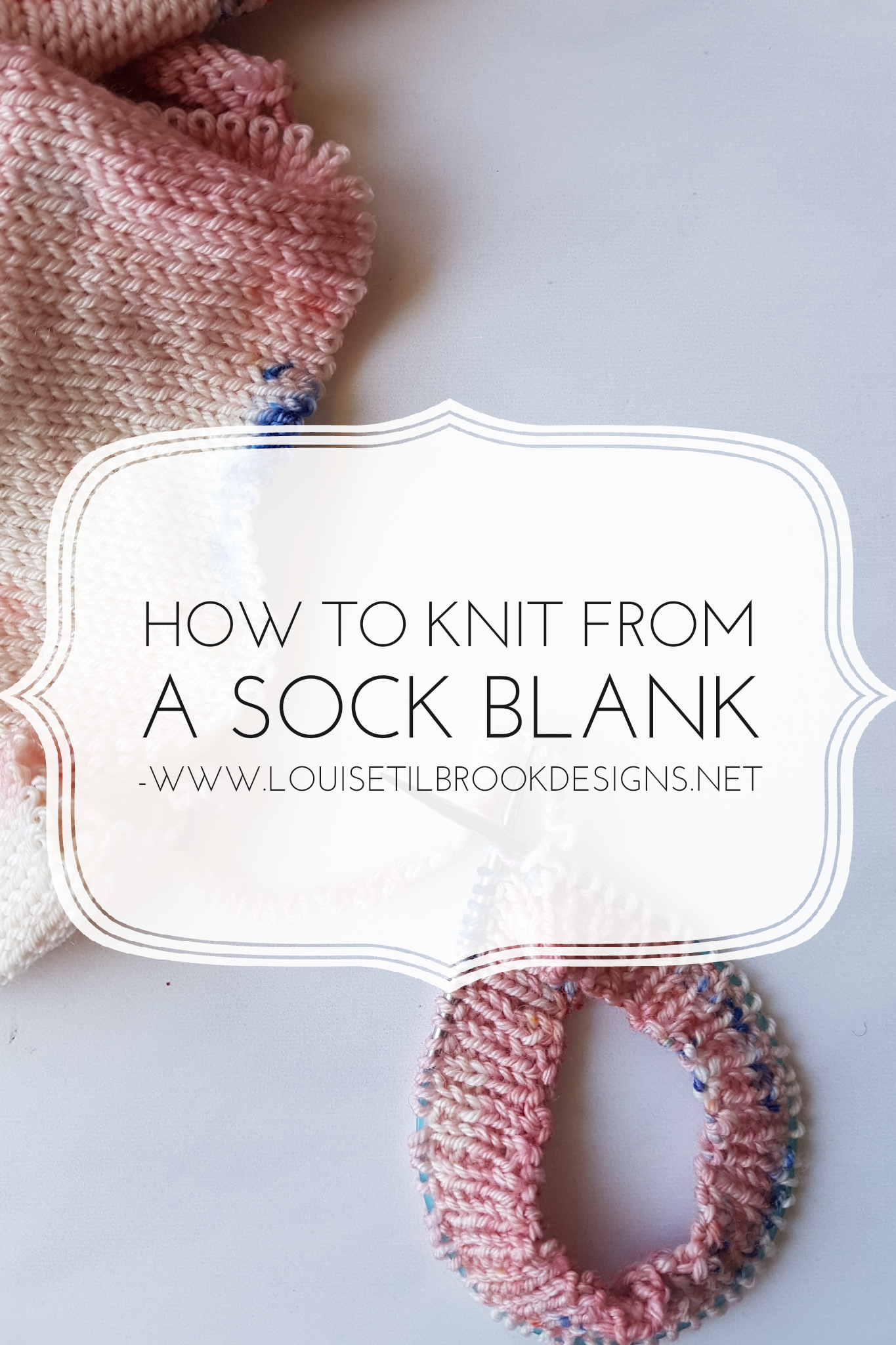What on earth is a sock blank I hear you ask? Simply put, it is a machine knitted flat piece of fabric which you then unravel and knit with. It really is that straightforward. Rather than knitting from a ball or skein or yarn you unravel the yarn as you go and knit with it.
This always baffles my husband. "So you are taking a piece of knitting, and turning it back into knitting?" was his puzzled query when I showed him what I was doing. "Why on earth would you do that?". But he has been around knitters long enough to know not to argue and to accept that we are ingenious souls who come up with all manner of intriguing solutions.
By applying the dye to a flat piece of knitted fabric rather than the actual strands of yarn themselves, dyers can produce a fabulous range of colours and effects that would be very hard to achieve otherwise. A gradient-dyed yarn is much more straightforward to produce from dyeing a sock blank than it is to apply a gradient to a continuous 400m length of yarn, for example. Hand dyers can really go to town and have fun with the dye pots and then, as knitters, we get the inestimable joy of knitting with it, straight from the fabric. There is no winding or caking needed.
The first thing to is to unroll the fat sausage-like sock blank and check if it is a double layer of fabric or a single layer. If it is a double layer it means that you can knit two socks at the same time (should you want to - don't worry - it isn't compulsory). If it is a single layer you will need to knit one sock at a time. Please don't try to unravel from both ends of a single layer - that way madness lies. The sock blank has a right end to pull the yarn from and a wrong end - it will quickly become apparent when you give an experimental tug and unravel a metre or two.
If you do have a double stranded sock blank and you want to knit with just one strand at once you will need to come up with a solution for dealing with the other strand as you work. Either wind each strand off separately into 2 balls before you start or wind the other yarn around a bobbin (or similar) as you work. If you aren't sure, check with the dyer before buying to make sure you get a sock blank that will work for the project you have in mind.
And that's really all there is to it. Unravel the yarn for a metre or so and cast on. The yarn will have the characteristic "kinky" appearance that you get from unravelled yarn and to be honest it can take a bit of getting used to, but the fun you will have from watching the colours play before your eyes will more than make up for it.
Do I need to reskein and soak the yarn to remove the kinks?
This is a matter of personal preference. For me, I'm quite happy to knit as it is but if you know that this would drive you mad then by all means then you can wind the yarn into a skein, soak, dry and then rewind. The only time that I have done this with a sock blank is when I was knitting from a beautiful single layer of rainbow gradient yarn for my Fuss Free Festival Shawl. Because I was knitting at quite a loose gauge (on 4mm needles) the kinkiness gave an unevenness to the garter stitch fabric that I didn't really care for and it didn't fully go away after blocking. Normally when you are knitting socks, the much tighter gauge used tends to eliminate this problem and any slight unevenness in the fabric is normally undetectable after the socks have been washed and worn.
Have I tempted you? If you do decide to go ahead and try a sock blank do let me know.
PIN FOR LATER

